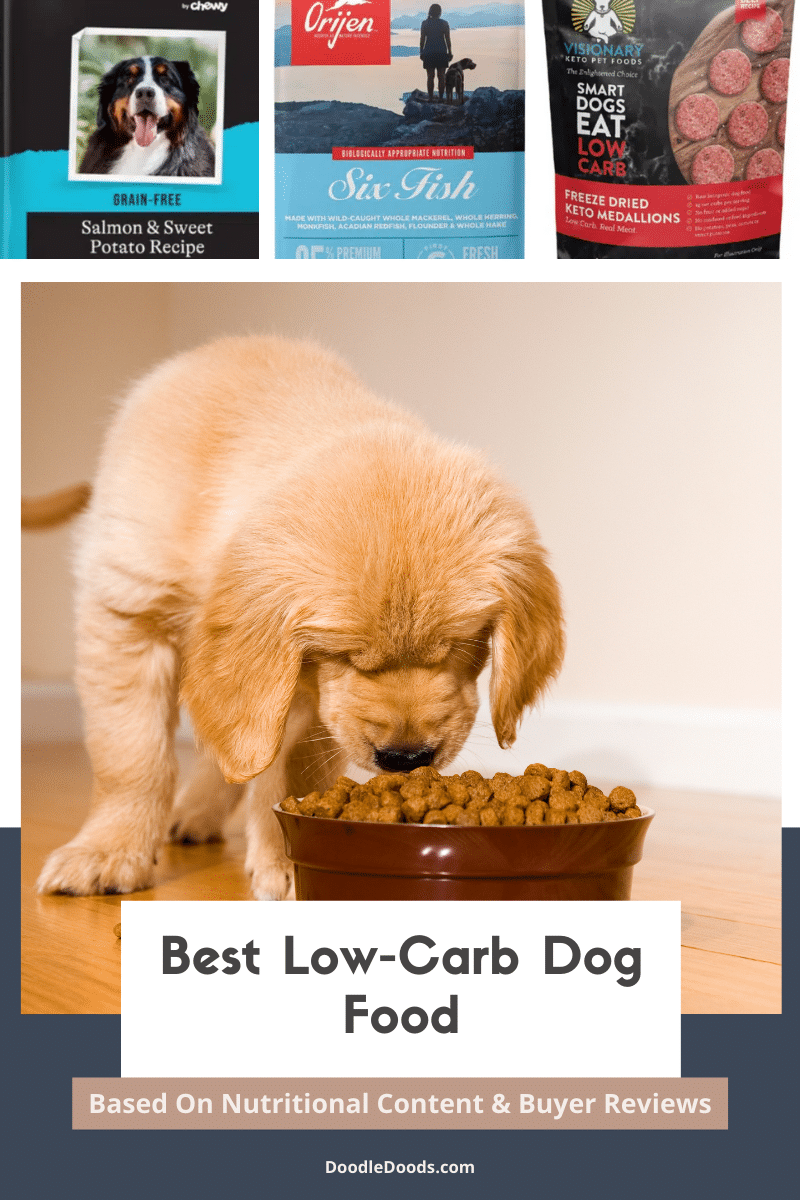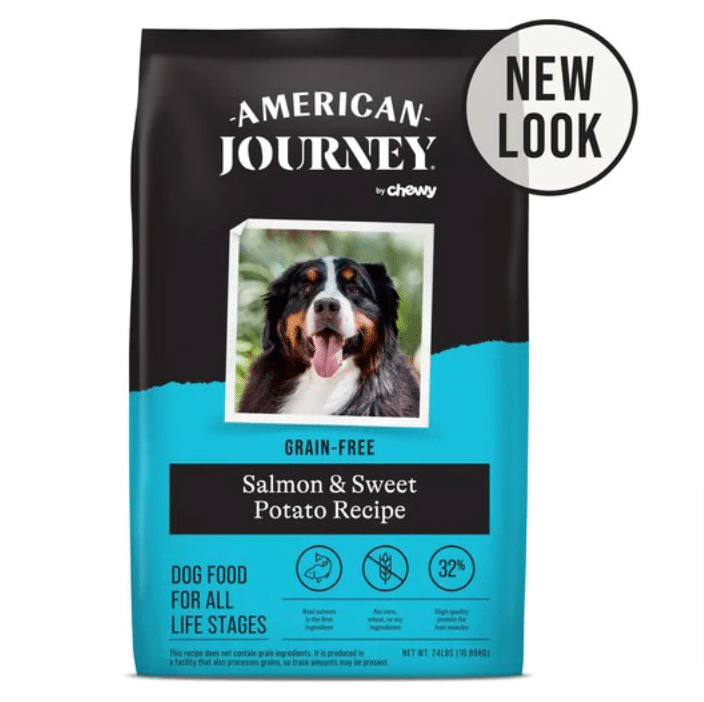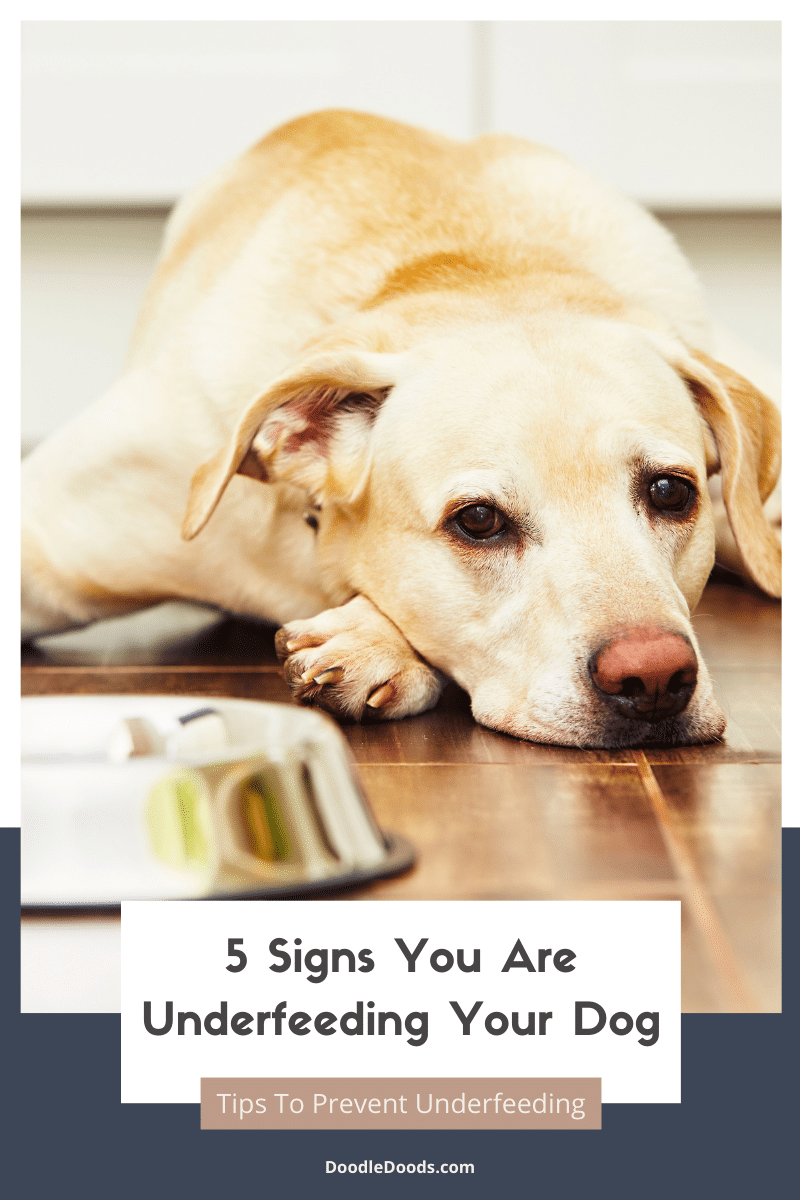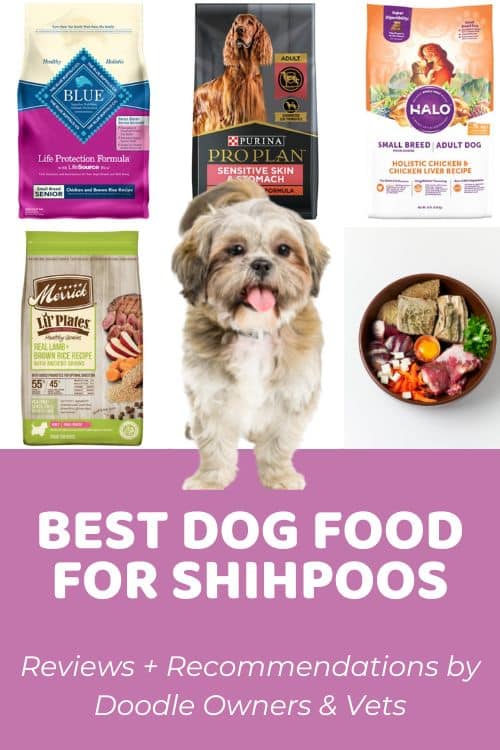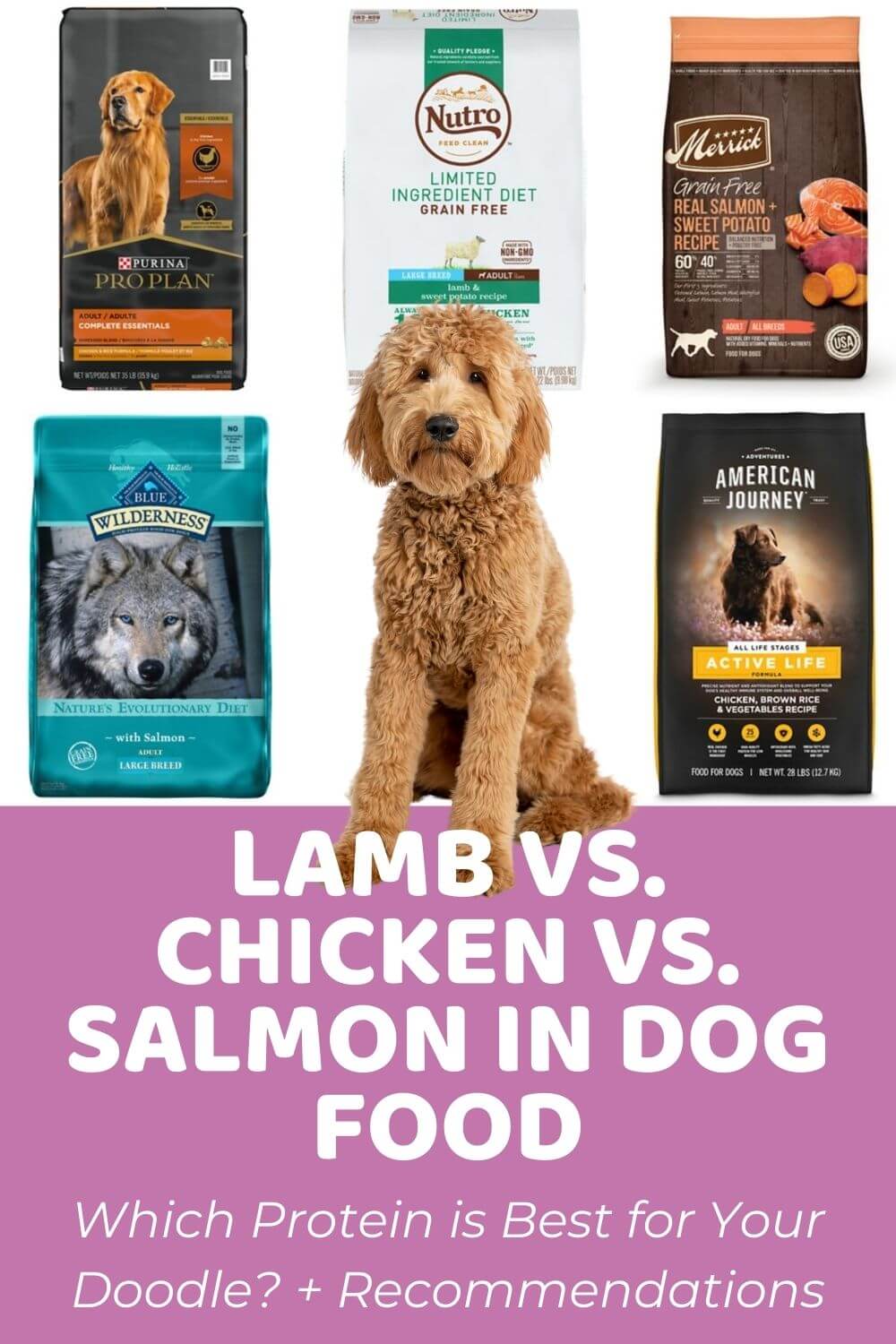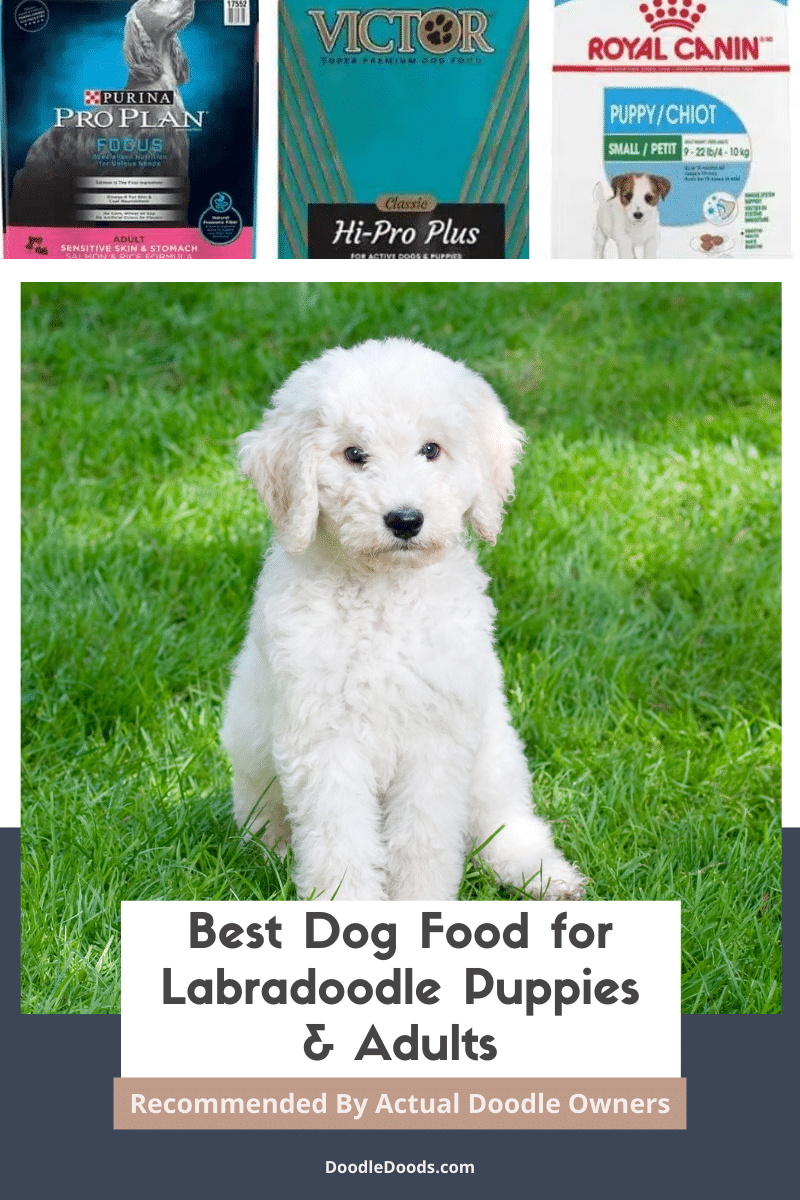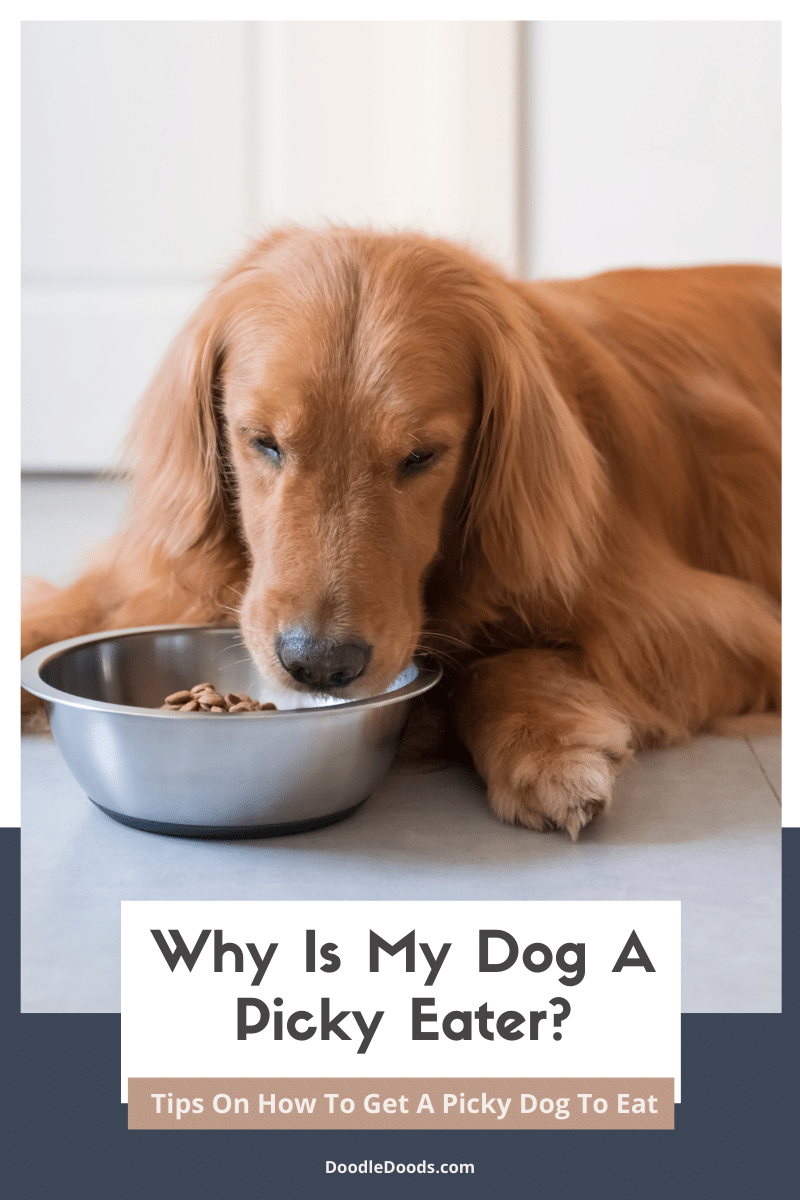As a responsible pet parent, you’ll want to feed your dog the very best food you can so that they can enjoy a happy, healthy, and long life. However, we often place far too much of our trust in food manufacturers without really knowing whether the kibble they are producing is doing the best by our pup. That’s why having at least a basic understanding of canine nutrition and what to look out for on dog food labels is useful. Most carbohydrates are fine, and some even have health benefits for dogs. Yet, often commercial dog food contains a far larger ratio of this macronutrient than canines actually need. While this may not be too much of a big deal for very active pups, more sedentary ones could quickly start to pile on the pounds. For this reason (as well as other health considerations), you might be looking for a low-carb food alternative for your Dood.
Well, you’ve come to the right place!
Here we’ll give you the rundown on five of the best low-carb dog foods around.
Table of Contents
- Low-Carb Dog Food: The What And The Why
- The Pros and Cons of Carbohydrates
- Reasons To Feed Your Dog A Low-Carb Food
- Calculating The Carb Content of Dog Food
- Best Low-Carb Dog Foods: Buyer’s Guide
- Best Low-Carb Dog Foods: Reviews
- Considering Home-Made Alternative Low-Carb Dog Meals?
- Feeding Your Doodle A Low-Carb Diet: Frequently Asked Questions
- Final Thoughts
Top 5 Low-Carb Dog Foods Preferred By Pet Parents
Just here for the recommendations? Here they are, along with links to where you can purchase the foods at Chewy. However, if you’d like to learn a little more about the various benefits of each of these formulas – and low-carb food in general – keep scrolling.
-
Pick #1:
American Journey Salmon & Sweet Potato Recipe Grain-Free Dry Dog Food
Made with salmon as the number one ingredient American Journey’s excellent blend is rich in amino acids, vitamins, minerals, and antioxidants with no unnecessary extras. -
Pick #2:
Wellness CORE Grain-Free Large Breed Chicken & Turkey Recipe Natural Dry Dog Food
Perfect for dogs that are a little on the large side, Wellness’ grain-free formula is loaded with lean protein and fortified with probiotics, vitamins, minerals, and omega fatty acids. -
Pick #3:
Visionary Pet Foods Keto Medallions Beef Recipe Grain-Free Freeze-Dried Dog Food
Something a bit different, Visionary Pet Foods’ low-carb beef medallions make for a nutritious meal with added nutrients from chia seeds and broccoli, among other things. -
Pick #4:
ORIJEN Six Fish Grain-Free Dry Dog Food
With wild-caught whole mackerel, herring, monkfish, Acadian redfish, flounder, and hake, Orijen’s dry dog food is bursting with lean protein goodness, vitamins and minerals. -
Pick #5:
Taste of the Wild High Prairie Grain-Free Dry Dog Food
Grain-free and prepared from roasted bison and venison, Taste of the Wild’s kibble is high in protein as well as fruits and superfoods, making it a modern diet inspired by nature.
Low-Carb Dog Food: The What And The Why
You’ll likely already know that carbohydrates, alongside protein and fat, are the three main macronutrients that fuel the body. Sugars, starches, and fiber from grains, fruits, and vegetables are all carbohydrates. These are easily digested by the body and converted into energy. However, dogs, while being considered omnivores by experts, still require a more meat-heavy diet than most other animals that can derive nutrition from plants.
The reason for this is that their bodily systems are simply more optimized for eating meat. They derive most of their energy from proteins and meat-based fats. Carbs can provide a little of this, but, in truth, a dog’s dietary carbohydrate needs are extremely low – some would say non-existent. Yet, surprisingly carbs are the most dominant nutrient in most commercial dry dog foods. In fact, in some foods, carbohydrates constitute between 46% and 74% of the macronutrient makeup – crazy!
Something doesn’t seem to add up here…
Well, the truth of it is dog food manufacturers just love carb-heavy foods like wheat, barley, rice, corn, and potatoes because they are abundant, durable (for longer-term storage), and, above all, by far the cheaper ingredients as compared with protein, for instance. That being said, some carbohydrates, when used in moderation, do have their uses. It’s just not great when they are used in place of more nutrient-rich ingredients.
The Pros and Cons of Carbohydrates
While it’s easy to get the impression that ALL carbs are bad – that’s simply not the case. Carbohydrates actually have several important functions in dog food. The first and most obvious of these is that they provide a quick and easy energy source for especially active hounds through their conversion to simple sugars that are very easily absorbed.
Starchy carbohydrates also provide kibble with its structure and texture, better preparing it for storage and making it more enjoyable to eat. This crisp outside biscuit head benefits for the teeth, removing tartar and keeping gums healthy, while the presence of carbohydrates in dry dog food keeps your dog feeling fuller for longer.
Grain and plant-based carbohydrates provide necessary dietary fiber. Not only does this help regulate bacteria in the colon, but it also aids with filling your pup up (preventing obesity and assisting with weight loss). It also supports digestive health and can even help control blood sugar levels in diabetic dogs.
However, all these advantages hinge on the food having the right amount and the right kinds of carbs. Plant-based ones are more nutrient-dense and so naturally better. On the other hand, simple carbs from foods that need to be cooked (potatoes, rice…) are high in sugar and can all too easily lead to obesity and all associated health conditions.
Reasons To Feed Your Dog A Low-Carb Food
The benefits of a low-carb dog food is that it’s much more similar to the diet that their body is evolved to eating, it contributes to them becoming lean and fit, it addresses issues of allergies for those hounds that are sensitive to grains and carbs (more than you might think!), and it eliminates ingredients that have no nutritional benefit for your dog.
You’ll likely want to switch to low carb if your dog is on the heavy side and you’re looking for them to lose a little weight. This typically tends to happen even in active dogs when they get a little older and slow down. A good food will not only help with dropping lbs but will keep your mutt at a healthy weight while ensuring they have plenty of energy.
Your vet might also recommend placing your dog on a low-carb diet due to illness or certain health conditions they may have developed. These include cancer, digestive issues, inflammatory bowel disease, diabetes, high blood sugar, and various allergies. Too many of the wrong kinds of carbohydrates can also lead to chronic inflammation.
Calculating The Carb Content of Dog Food
The biggest difficulty with finding a low-carb dog food is that most don’t clearly advertise the carbohydrate content in the nutrition section the way they do for protein and fats. Sure, you can find fiber listed there, but this is only part of the story. However, as all food is balanced between the three major micronutrients and we have access to the first two numbers, calculating the other is usually pretty straightforward.
What you need to do for dry dog food is add the protein, fat, and moisture numbers together with something known as “ash levels.” This is basically a fancy way of saying the mineral content, which should also be listed. It usually sits somewhere around 4% to 10%, with higher protein foods having a number towards the upper end of the scale. Subtract this from 100, et voila! Now you know how much of the food are carbs.
Best Low-Carb Dog Foods: Buyer’s Guide
While you may be happy to jump right on the ‘carbs are bad for dogs’ bandwagon and start immediately picking out an alternative, there are a few things to keep in mind even with low-carb dog food:
Make Sure It’s Nutritionally Balanced
Just because a food is low in carbs doesn’t mean it’s automatically healthy. It’s still a good idea to be sure about the other macronutrients, vitamins, and minerals. For a start, you’ll want to ensure that the top ingredient of the food is a protein and that the food contains a minimum of 18% crude protein and 5.5% crude fat for standard adult dogs and 22.5% crude protein and 8.5% crude fat for growing puppies and pregnant dogs.
These numbers are optimum according to standards outlined by the Association of American Feed Control Officials (AAFCO), an independent organization that regulates animal food. Their dog nutrient profile also details the different types and amounts of vitamins and minerals that should also be present in commercial dog food. These include calcium and phosphorus, as well as vitamins A, D, and E, plus folic acid and choline.
Opt For High-Quality Protein
With a low-carb formula, the lost energy is typically made up in protein, although a keto food will likely have much more fat. Either way, the food typically has a higher-than-average protein content, so you’ll want to be sure the manufacturer is not using substandard meat to keep costs down. While you may consider meals, byproducts, or fats inferior to actual animal meat, much of the time, these have a lot to offer in terms of nutrition. For instance, the liver may be listed as a byproduct, but it is rich in vitamin A.
Take Care With Fats
Fats can be a great thing for dogs. It’s their primary energy source – they can quickly use these calories to fuel their body. Plus, different fats have other benefits. For instance, omega fatty acids support a healthy coat and immune system, have anti-inflammatory effects, and help to stimulate natural skin oil production. Yet, as we know, too much of a good thing can be bad. When it comes to fat, too much and, well, your pet will get fat. The more active they are, on the other hand, the more they can handle.
Best Low-Carb Dog Foods: Reviews
Best for Older Dogs: American Journey Salmon & Sweet Potato Recipe Grain-Free Dry Dog Food
Protein: 32% min Fat: 14% min Calories: 390/cup Carbohydrates: 38.25% max
Falling below the 40% minimum average but still slightly higher in carbs compared to the rest of the offerings on this list, we nevertheless like the American Journey food because it’s an all-around solid choice. Salmon is an excellently lean protein source packed full of goodies like omega-3 and omega-6 fatty acids, which support skin, coat, immune system, brain, and eye healthy – among other things. Added nutrient-dense whole fruits and vegetables contribute vitamins and minerals for a fully balanced, healthy canine diet.
Pet parents also seem to love this super kibble backing up the manufacturer’s claims that it’s great for skin and coat health. Some reviewers were a little worried about the smell, but in actuality, it smells nicely like fresh fish, so it is appealing to most dogs. It’s good also to see glucosamine and chondroitin listed under the nutritional information as, alongside the omega fatty acids, these are excellent for supporting better joint health in older dogs who may struggle with issues here, and it’s great for sensitive tums too!
Pros
- A trusted brand and an excellent recipe that gives dogs something a little different from the usual flavors. Perfect for dogs with food intolerances and allergies as it’s nicely gentle on the stomach while still being temptingly tasty.
Cons
- If you’re shopping around for chicken alternatives, this is not the choice for you. Chicken meal is the number two ingredient.
Best for Larger Dogs: Wellness CORE Grain-Free Large Breed Chicken & Turkey Recipe Natural Dry Dog Food
Protein: 34% min Fat: 12% min Calories: 342/cup Carbohydrates: 36.6% max
Finding food to suit a bigger breed isn’t always a piece of cake. Most kibbles will rattle right down without touching the sides. Not so this one, though. And it’s not only the biscuit size that puts this food at the very top of its game. This recipe is specifically formulated using advanced natural nutrition to ensure it contains the very best in antioxidants, probiotics, vitamins, minerals, glucosamine, chondroitin, and omegas to support larger dog growth and ongoing well-being without fillers or unwanted carbs.
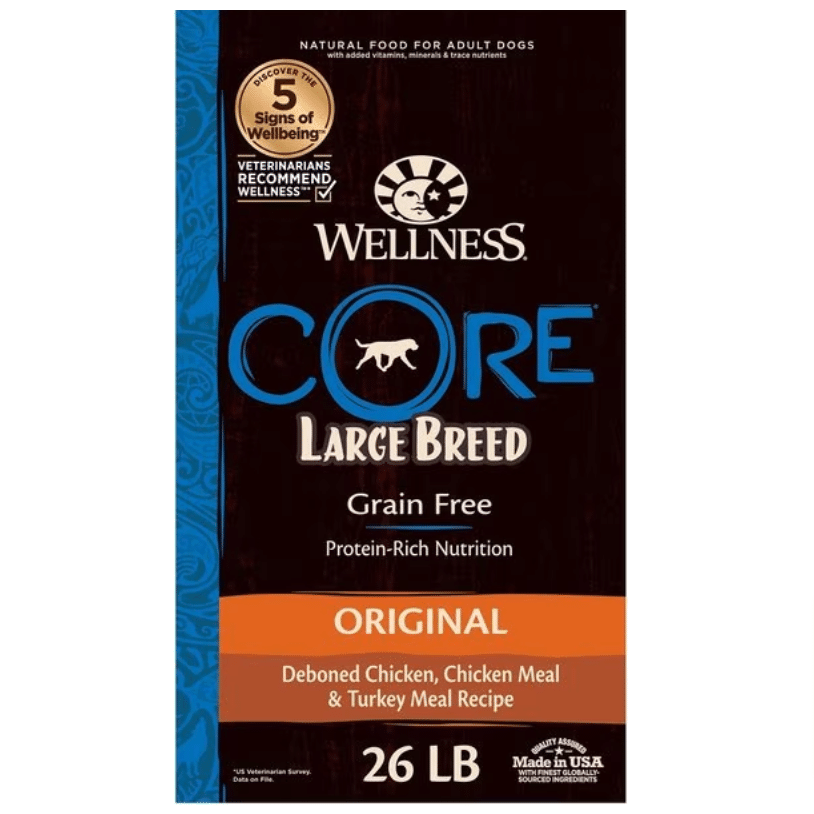
The reviews for this excellent food are pretty fantastic, with 93% of buyers saying they would recommend it to a friend. Hot topics include ‘healthy,’ ‘ingredients,’ ‘price,’ and ‘quality.’ Not only does the blend seem awesome for weight management for dogs that have started to get a little podgy, but many owners report a significant boost in their fur babies’ energy levels that will no doubt also help them with shifting those unwanted pounds. One impressed pet parent goes as far as to describe the kibble as “devourable.”
Pros
- A balanced combination of ingredients that are not only low in carbohydrates and other fillers but that work together to support the health of larger dogs everywhere.
Cons
- Some reviewers grumble about the cost of the food. Kibbles with higher protein levels will naturally be more expensive than those with mostly cheaper carb content.
Best for Oversized Dogs: Visionary Pet Foods Keto Medallions Beef Recipe Grain-Free Freeze-Dried Dog Food
Protein: 36% min Fat: 41% min Calories: 158/cup Carbohydrates: 18% max
You’ve heard of the many benefits of the ketogenic diet for humans. Now your pets can feel the health advantages of a minimal carbohydrate, high-fat diet too. The idea is that it aids with weight loss by putting the body in a state of ketosis, whereby it gets energy from fats rather than carbohydrates. As dogs are built to get their energy this way anyhow, the diet actually makes even more sense for pups than it might for people. We also love the limited ingredients of this raw food, which are nothing but healthy!
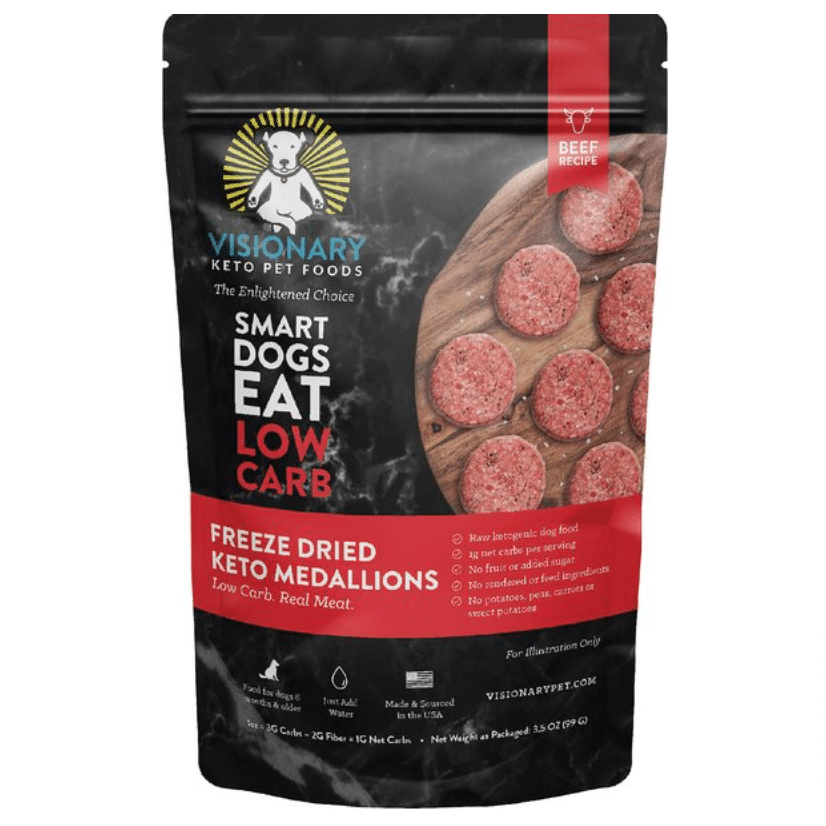
Probably one of the most extensive benefits of the keto diet for dogs is that research indicates it can ease the symptoms of several canine maladies, including epilepsy and diabetes. On the whole, the reviews seem to support this, with certain pet parents even pointing out that the food was recommended by their vet. On that note, as with every drastic change in food, we do recommend talking the keto diet through with your vet to see if it will suit your particular pup before making the transition.
Pros
- That ingredients list, though… what’s not to love? It’s super transparent, and you can see exactly what you are feeding your pup, which is not always a given with dry dog foods!
Cons
- The amount of fat in this food might not agree with all dogs, you could face digestive issues (namely diarrhea), and it could cause problems for canines with certain health conditions – check with your vet!
Best for Athletic Dogs: ORIJEN Six Fish Grain-Free Dry Dog Food
Protein: 38% min Fat: 18% min Calories: 468/cup Carbohydrates: 24.1% max
Higher in both calories and protein than the other foods on this list, Orijen’s is a good pick for dogs who spend a good deal of their day running about. And not only is this freeze-dried food an excellent source of the kind of proteins perfect for building lean muscle mass, but the kibble is constructed from all parts of the animals, including the organs and even the bones meaning pound-for-pound; it’s far more nutrient-rich than comparable foods. In this way, it “nourishes dogs in the way nature intended.”
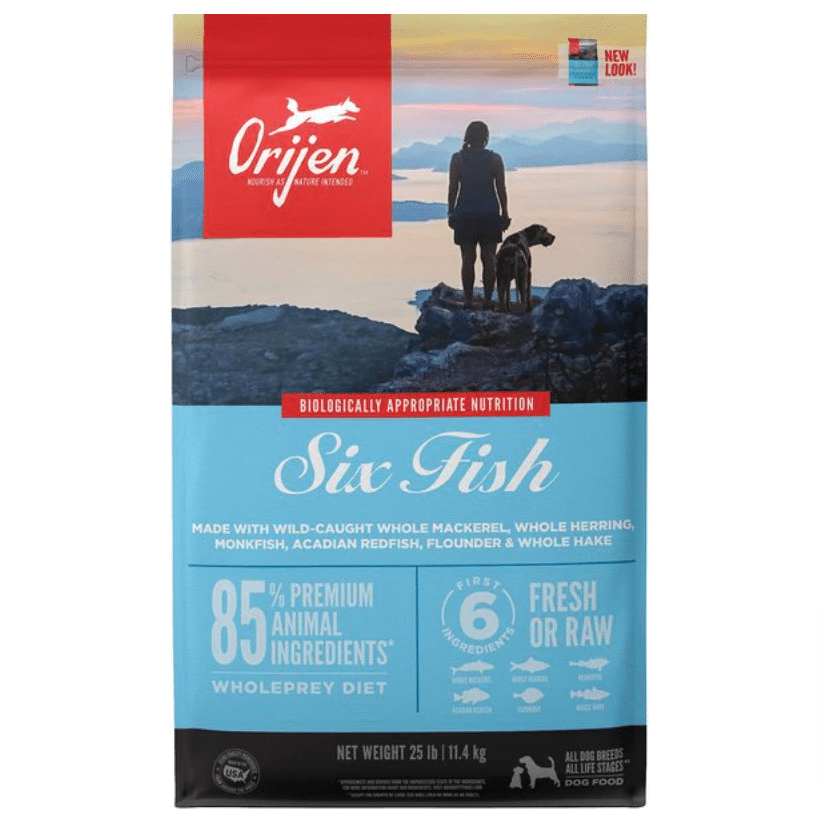
The great thing about most fish-based foods is that they are particularly good for dogs with food sensitivities – and that seems especially true for this one. The reason? The protein/fat content isn’t boosted with any poultry products (chicken and eggs can be a particular problem for some dogs). Aside from that, reviewers (all 800+ of them) rate this food exceptionally well because of the top-quality ingredients, which they say are “worth every penny.” In fact, one happy purchaser even dubs it the “best there is.”
Pros
- A great chicken-free food that is perfect for sensitive tummies and with quality nutrients that significantly increase skin and coat health as well as improving digestion.
Cons
- Some reviewers grumble about the fishy smell, and others have had issues with the packaging – but not the food itself.
Best for Fussy Dogs: Taste of the Wild High Prairie Grain-Free Dry Dog Food
Protein: 32% min Fat: 18% min Calories: 422/cup Carbohydrates: 36.78% max
Again a little higher on the carb scale – but all the good kind – Taste of the Wild is another top-quality flavor alternative for dogs that perhaps seem a little bored of the norm. That being said, the label is a little misleading, as lamb and chicken do make up some of the top ingredients here. We’ll forgive them, though, because the rest of the formula is stunning. Fruits, superfoods, added omega fatty acids, probiotics, and prebiotics support healthy digestion, immune system health, and overall health and wellness.
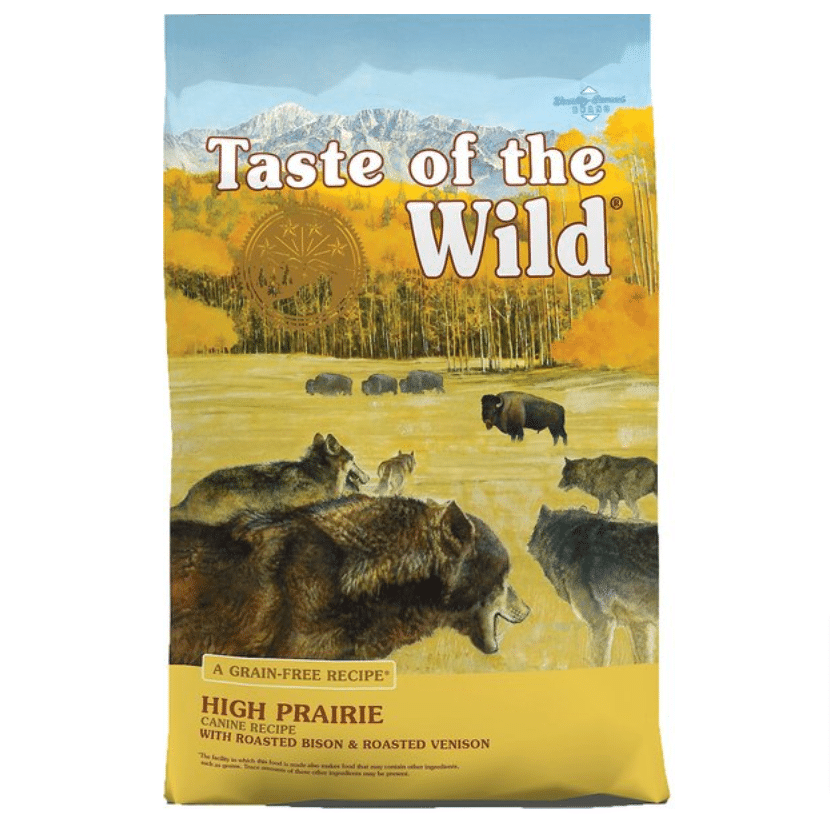
Again the reviews are excellent for this top-quality product (as if we’d include it if they weren’t!) Around 80% of users rate the food five stars and comment that it gives their dogs more energy and life despite them needing to eat less of it than other foods – because they get all the nutrients they need from a smaller amount. They are happy with the quality and, above that, the consistency of the kibble from bag to bag. Most dogs seem to just lap it up, and it doesn’t cause issues for delicate tummies either.
Pros
- A nicely-smelling, tempting kibble for dogs that don’t always love dry dog food, even if they have sensitivities towards certain dog food ingredients.
Cons
- Again, the price seems to be a bugbear for some buyers, but this is likely the case because of the more difficult-to-source proteins.
Considering Home-Made Alternative Low-Carb Dog Meals?
If you prefer to go for homemade, so you can know precisely what your dog is getting each day, be prepared to do plenty of research. Not only are you going to need to know the foods dogs can’t eat, but you’re going to want to have a pretty firm nutritional understanding of the ones they can.
While there are plenty of low-carb dog food recipes out there on the interweb, don’t take it as a given that the people know what they are talking about, no matter how professional the site may seem. However, if you’re prepared to put the work in, the American Kennel Club (AKC) has a helpful article on getting started, and Balance IT is another excellent resource.
Feeding Your Doodle A Low-Carb Diet: Frequently Asked Questions
While some grain-free dog foods (such as the ones on our list) frequently have fewer carbs than other foods, they do have them. Other carbohydrate sources such as potatoes, sweet potatoes, lentils, peas, or quinoa are often substituted in. In fact, for this reason, it could even be the case that they contain higher-than-average quantities.
Depending on the rest of the ingredients in the food, chances are your pet will end up losing at least some weight on a low-carb diet. This is especially the case if you pick one that is low in calories, as these foods very often tend to be anyhow. Just be sure to feed your dog the correct amount based on their size, life stage, and activity level.
Dogs have very little nutritional requirement for dietary carbs, and so, yes, they could likely very easily survive without any carbs at all. However, just because they could doesn’t mean they should. Carbohydrates are okay for dogs and even offer up a few benefits when they are the right kind and when they are served up in moderation.
As most dog foods don’t typically advertise their carbohydrate content (unless it’s a specific keto or low-carb formula, that is), you’re going to need to do a little math to work out whether your dog food is low-carb. Simply minus the protein, fat, moisture, and ash content from 100, and you’ll have a number. If that number is below 40, then it is indeed.
Vegetables can be another excellent source of more healthy carbohydrates, and dog food manufacturers often take full advantage of this fact. In kibbles, you might frequently spot veggies such as carrots, peas, yams, sweet potatoes, squash, and pumpkin. These can also make excellent treat alternatives for your pet when given in moderation, of course.
Final Thoughts
Carbohydrates can be an excellent source of fast-acting energy for dogs. Still, excessive amounts can lead to rapid weight gain and the kinds of diseases that are triggered by obesity in more sedentary pups. Sadly, as carbohydrates tend to be the cheapest ingredients, many commercial dog foods today have more than their fair share of these. If you’re looking to transition your dog to a low-carb dog food to help them lose a few pounds, for other health reasons, or simply because you would prefer they had a diet more in keeping with what their ancestors ate, then you can go wrong with any from our list!
Want to Learn
DIY Doodle Grooming?
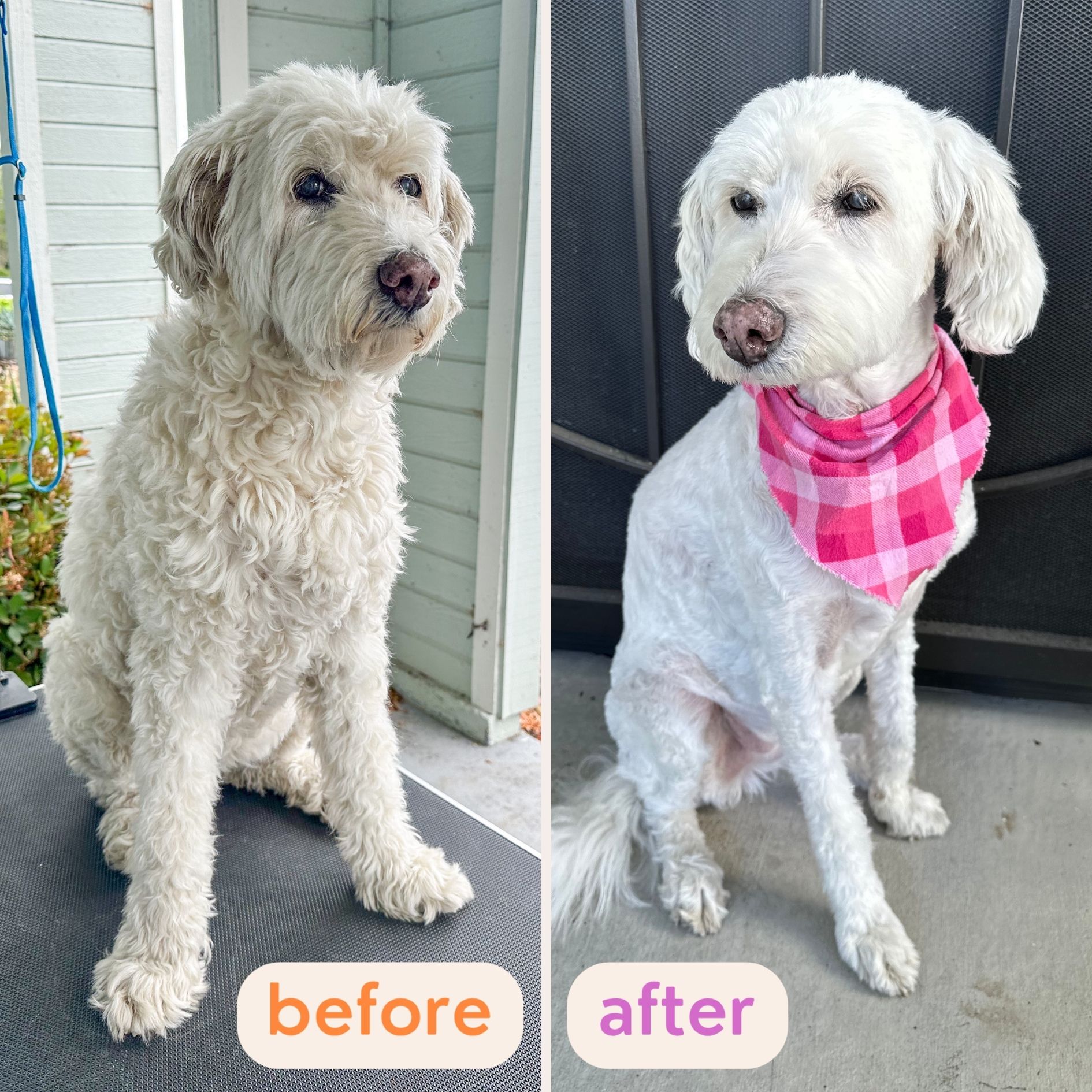
 “Every concern and question I had now has clear, practical solutions.” – Paula D.
“Every concern and question I had now has clear, practical solutions.” – Paula D.
 “These lessons have provided tremendous amounts of information.” – Steve B.
“These lessons have provided tremendous amounts of information.” – Steve B.
 “Buy the course and complain about how easy it is!” – Chris S.
“Buy the course and complain about how easy it is!” – Chris S.
Learn How To Groom Your Doodle At Home…
Safely…And Without Confusion:

